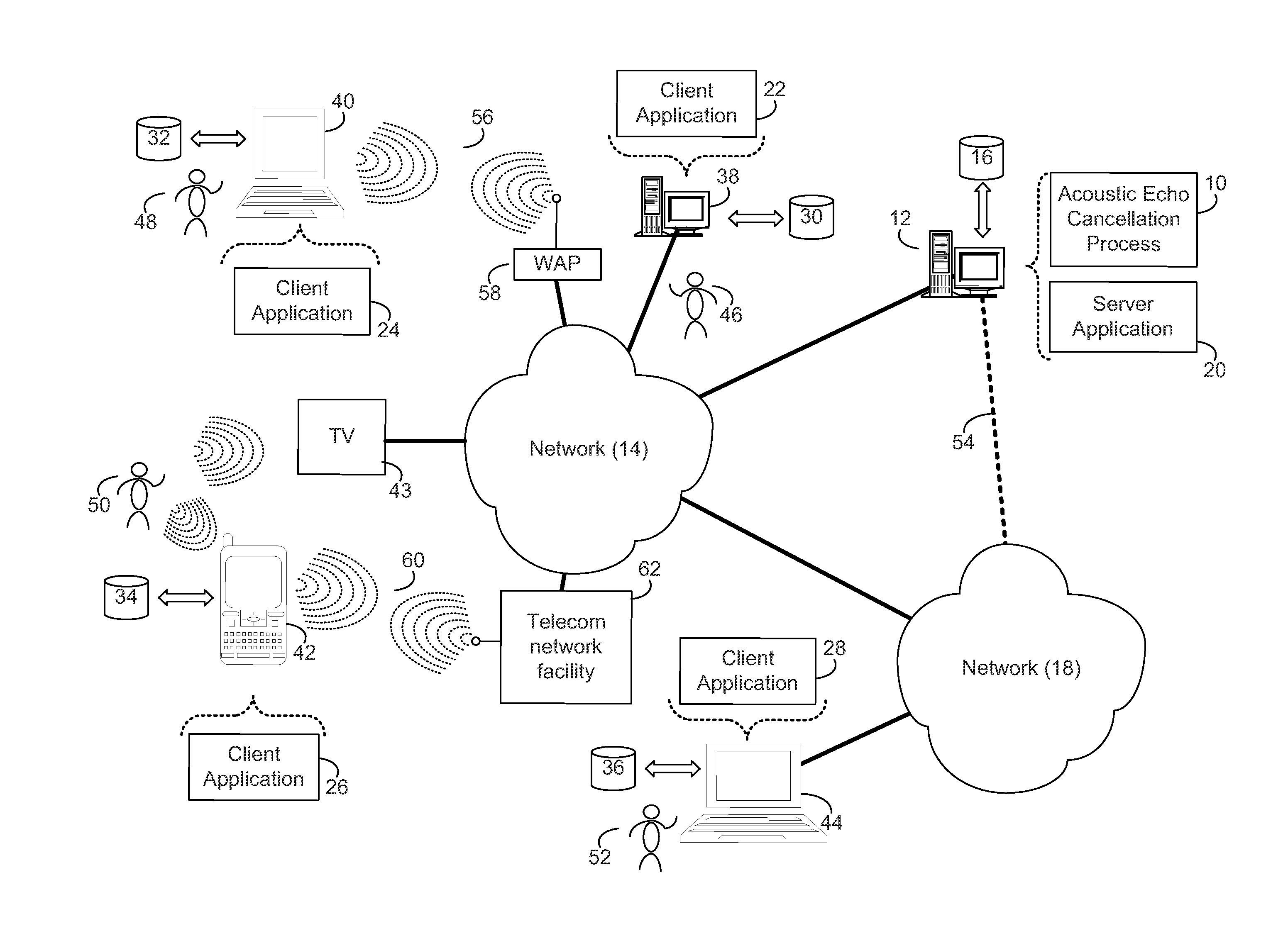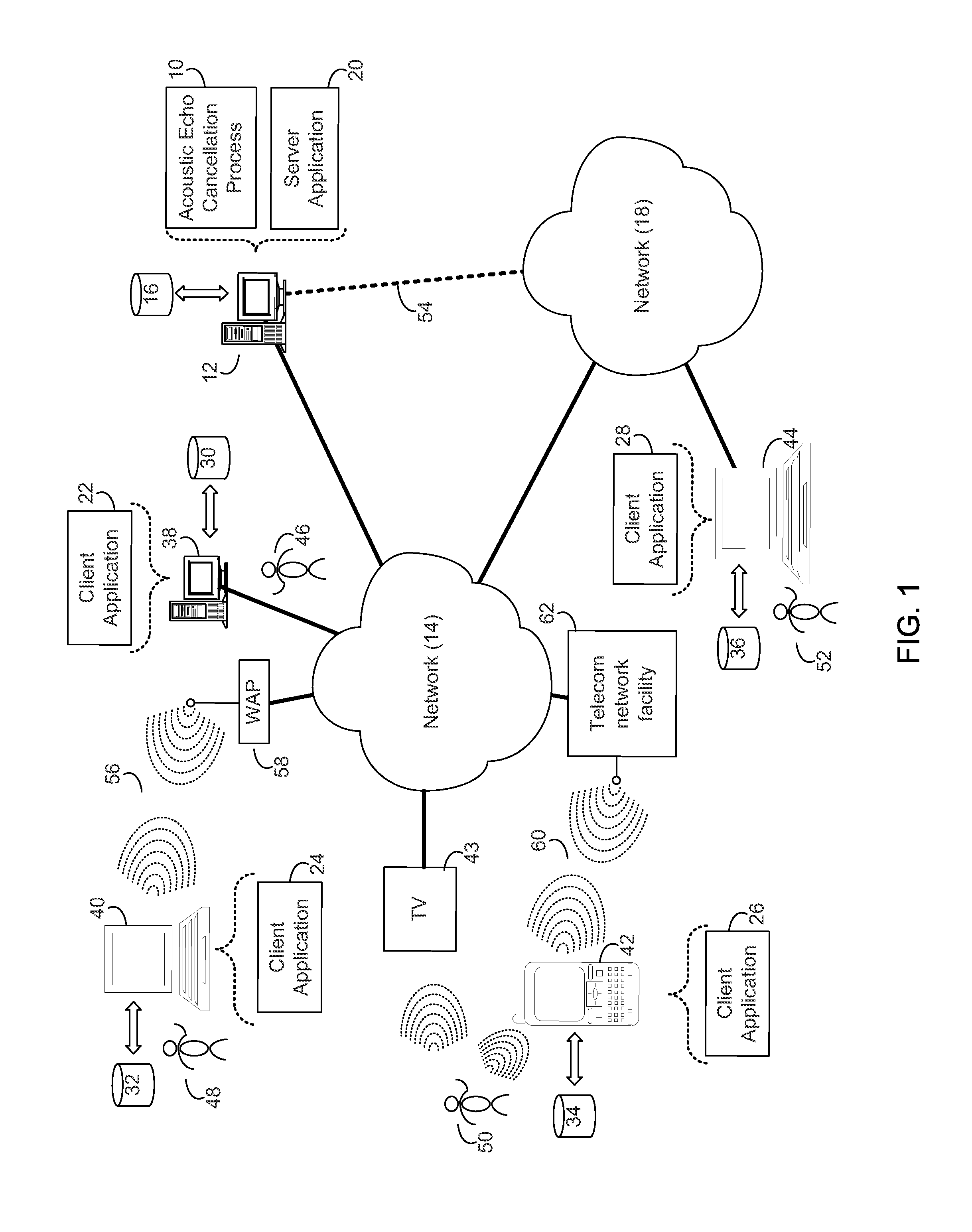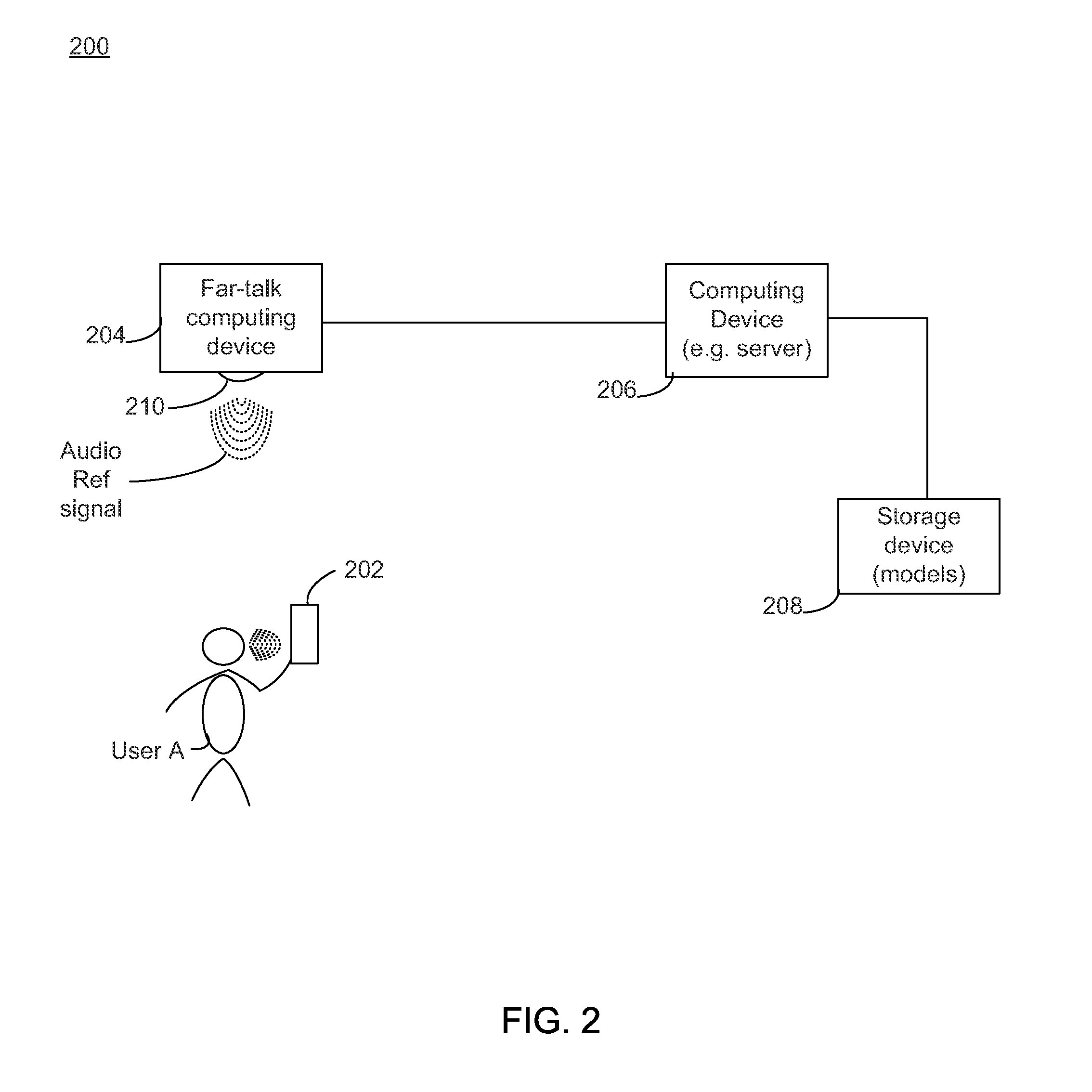System and method for acoustic echo cancellation
a technology of acoustic echo and cancellation method, applied in the field of acoustic echo cancellation, can solve the problem that the system will no longer respond to this acoustic echo
- Summary
- Abstract
- Description
- Claims
- Application Information
AI Technical Summary
Benefits of technology
Problems solved by technology
Method used
Image
Examples
Embodiment Construction
[0015]Embodiments provided herein are directed towards reducing the computational complexity of acoustic echo cancellation systems by exploiting properties of the played-back audio signals. An AEC algorithm often includes both filtering the played-back signals (i.e., reference signals) and updating the filters in order to adjust them for optimal performance. Generally, filtering and updating may cause a similar computational load. Embodiments of AEC process 10 described herein are directed towards reducing the efforts required to perform the update. In this way, AEC process 10 may be configured to analyze the signal energy across channels, frequency and time and may update the AEC filter(s) only in certain identified areas. It is understood that updating only the coefficients of the AEC filter that would get the largest update (i.e., -Max) may reduce the complexity. AEC process 10 described herein may be configured to further extend this concept with respect to frequency as well as...
PUM
 Login to View More
Login to View More Abstract
Description
Claims
Application Information
 Login to View More
Login to View More - R&D
- Intellectual Property
- Life Sciences
- Materials
- Tech Scout
- Unparalleled Data Quality
- Higher Quality Content
- 60% Fewer Hallucinations
Browse by: Latest US Patents, China's latest patents, Technical Efficacy Thesaurus, Application Domain, Technology Topic, Popular Technical Reports.
© 2025 PatSnap. All rights reserved.Legal|Privacy policy|Modern Slavery Act Transparency Statement|Sitemap|About US| Contact US: help@patsnap.com



